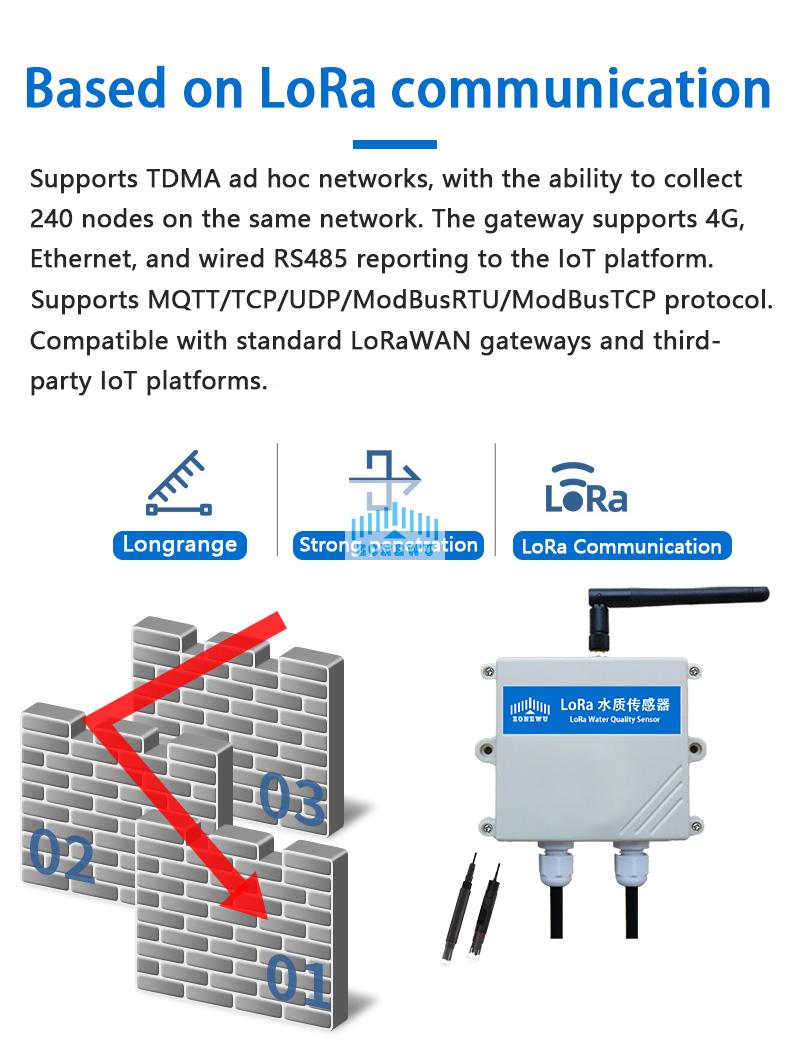LoRaWAN (Long Range Wide Area Network, long Distance WAN) is a low-power WAN standard defined by the LoRa AlliancenetworkCommunication protocol and system architecture. LoRaWAN Technology is for the batterysupply electricityWireless devices provide local, national and even global network connectivity.
LoRaWAN The main features include:
long haulcommunication: relative toWi-Fi、PDAAndZigbeeSuch as wireless technology, LoRaWAN technology to achieve more long-distance coverage. The coverage is about 2 km in building dense urban environments and in less dense suburbs up to 10 km.
Low power consumption: using the battery-powered LoRa terminal, the battery life of up to 10 years, effectively reducing the use cost of users.
Free from authorized frequency band: LoRaWAN Use the free ISM frequency band, such as 433 MHz, 470 MHz, etc., and the use cost is low.
Large capacity: A LoRa gateway can connect to thousands of LoRa terminals.
Flexible network architecture: LoRaWAN Network architecture is a typical star topology, in which the LoRa gateway is a transparent transmission relay, connecting the terminal device and the back-end central server. This architecture makesintelligenceDevices can achieve seamless docking and interoperation, forInternet of thingsUsers in the fielddeveloperAnd enterprises to provide more operating space.
LoRaWAN Network architecture
LoRaWAN Network architecture is a typical star topology structure, in which the LoRa DTU gateway is a transparent relay, connecting terminal devices and servers. The gateway is connected to the server through the standard IP, while the terminal device communicates with one or more gateways by single hop, and all the nodes are two-way communication.
LoRa DTU The gateway and LoRa modules are networked in star network, while LoRa modules can theoretically be networked in point-to-point polling, but the efficiency of point-to-point polling network is far lower than that of star network. The gateway can realize multi-channel parallel reception and handle multichannels simultaneouslysignal, This greatly increases the network capacity.ranging and positioning can also be achieved using LoRa. LPWAN has a long battery life, for those who need to send a small amount of datasensorAnd the application is really achieved low power consumption.
Lora positioning and ranging
The LoRa distance is measured according to the aerial transmission time of the transmitted signal rather than the received signal intensityRSSI value, positioning can be based on the multipoint (gateway) of the one point (terminal) of the air transmission time difference measurement. Its positioning accuracy can reach 5m.
The frequency band selection for LoRa
In theory, any frequency in the 150 MHz to 1 GHz frequency band can be used.butSemtechand so on LoRaslugNot allsub-GHz frequency band can be used, and some frequencies are not well supported outside the common frequency band (such as 433 MHz, 470 MHz ~ 510 MHz, 780 MHz, 780 MHz and 710 MHz 868 MHz and 915 MHz commonly used in Europe and America are commonly used bands).
lorawan Three working modes of the protocol
The LoRaWAN protocol defines three modes of operation, Class A, Class B and Class C. These patterns determine how the terminal communicates with the server and when the terminals reception window opens to receive data from the server.
Class A (Power saving mode): This is the most basic working mode, and all LoRaWAN terminals must be supported. In the Class A mode, the terminal first sends the data to the server. When the data is sent, the terminal will open two brief receiving windows for the data sent by the server. If no data is received in both windows, the terminal will not open the receiving window again until the next uplink transmission. This mode is very power-efficient because it requires the terminal to receive downlink data from the server within a short time after sending the data.
Class B (Convened mode): In the Class B mode, the terminal and the server can agree on the opening time of the data receiving window. In addition to the Class A random receive window, the Class B device opens additional reception windows at specified times. For the terminal to know when these windows, the terminal needs to receive a time synchronized beacon (Beacon) from the gateway. This allows the server to know that the terminal is listening and can send data at the agreed time.
Class C (Speed mode): In Class C mode, the receiving window of the terminal is almost always open, only temporarily closed when the data is sent. This mode allows the server to send data to the terminal almost anytime, so the delay from the server to the terminal is very low. However, with the long reception window opening, the terminals in Class C mode are more power consuming than Class A and Class B.
These three working modes can be selected according to the specific requirements of the application to find a balance between meeting the power consumption and data transmission requirements.

Contact: Qui
Phone: 18146178586
Tel: 18146178586
Email: qui@zonewu.com
Add: 1501-3, Building F03, Phase III, Software Park, Jimei District, Xiamen City, Fujian Province, China
